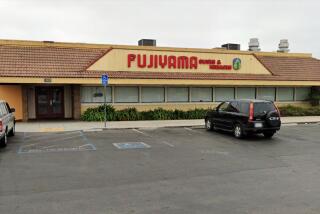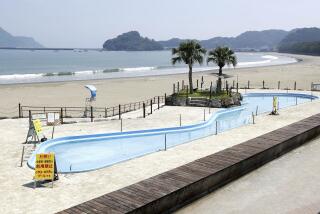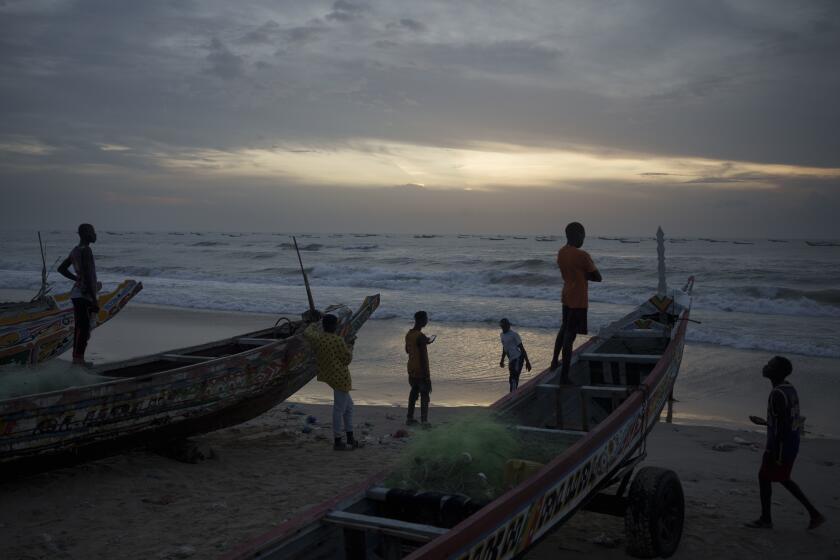Tokyo tap water not safe for infants, officials warn
Reporting from Tokyo -- Infants in Tokyo and five surrounding cities should not be allowed to consume tap water, the city’s government said Wednesday after elevated levels of radioactive iodine from a crippled nuclear plant were detected at a water treatment plant.
Japanese Prime Minister Naoto Kan urged consumers not to eat a dozen types of contaminated vegetables from the region surrounding the nuclear facility 150 miles northeast of the capital and also expanded a shipment ban.
Water tests in Tokyo found levels of radioactive iodine 131 at 210 becquerels per liter Tuesday and 190 becquerels per liter on Wednesday morning, about double the level of 100 becquerels per liter deemed safe for children under the age of 1. A level of 300 becquerels per liter is considered safe for adults.
Photos: Japan’s earthquake, tsunami and nuclear crisis
Tokyo Gov. Shintaro Ishihara said the city’s water was safe for “non-potable” use and urged residents to remain calm. But some convenience stores were sold out of bottled water late Wednesday and officials announced plans to distribute bottled water to 80,000 households with young children.
The national government said damage from the March 11 earthquake, tsunami and nuclear accident could reach 25 trillion yen or nearly $310 billion, significantly more than the World Bank’s recent estimate of $235 billion. The disaster could shrink Japan’s gross domestic product by 0.5% in fiscal year 2011, which begins April 1, the government said.
The new estimate could even be on the low side, because the government said it excludes losses in productivity from continuing power outages as well as the problems at the Fukushima Daiichi nuclear plant. The disaster could shrink Japan’s gross domestic product by 0.5% in fiscal year 2011, which begins April 1, the government said.
Workers continued their struggle to gain control over the Fukushima Daiichi nuclear plant. Dark smoke at the No. 3 reactor forced officials to evacuate the facility Wednesday afternoon.
Earlier, high temperatures at Reactor No. 1 and high radiation at Reactor No. 2 were reported, the government’s nuclear agency said, dashing hopes that reestablishing power to the entire plant on Tuesday would quickly help stabilize it.
As relief officials and evacuees continued to battle subfreezing temperatures on the 12th day after the quake, the National Police agency said the death toll had increased to 9,523 and the number of missing had risen yet again, from 14,700 Wednesday morning to 16,094 by 11 p.m.
Some rescuers said the rising toll of missing may reflect the fact that aid workers are still encountering groups of survivors who had been cut off from rescue efforts and are only now registering their missing loved ones.
U.S. Ambassador to Japan John Roos and a contingent of U.S. military officials toured towns along Japan’s battered northern coast. In Ishinomaki, he offered words of encouragement and further pledges of American support to a group of survivors who have taken shelter in an elementary school gymnasium.
In Yamada city in Iwate prefecture, about 100 miles north of Sendai, UCLA pediatric critical care doctor Kozue Shimabukuro said snow was falling as evacuees at one local elementary school lined up for food. Residents’ mobility was improving after days in which residents were only able to get around by foot, she said, thanks in part to Japanese Self-Defense Force troops clearing massive amounts of debris. A gas shortage also has eased.
“A portable shower was set up today, so it was a good day,” said Shimabukuro, 34, a native of Okinawa, who is volunteering with relief efforts.
At the nuclear plant, Tokyo Electric Power Co. said two workers were hospitalized after being injured Tuesday in the effort to reconnect power, although they were not exposed to radiation.
Chief cabinet secretary Yukio Edano said the source of the smoke Wednesday afternoon at Reactor No. 3 was unclear. But radiation levels one kilometer west of the plant had not changed, officials said. In Fukushima prefecture, tap water with levels exceeding 300 becquerels has been found.
Tepco has asked banks for about $18 billion in emergency loans to cope with the crisis at the power plant and the resulting power shortages in a wider area. Economy Minister Kaoru Yosano said ongoing power shortages would pose the biggest problem for Japan’s economy.
Insurers are tabulating their losses. Munich Re said Tuesday that it estimated its claims in Japan would amount to about 1.5 billion euros, or about $2.1 billion, and that its profit forecast for the year could not be maintained. Hannover Re said Wednesday it would have claims of about 250 million euros, or $355 million, from the Japan disaster. The World Bank’s recent report estimated that insurers would face claims of up to $33 billion in Japan.
Meanwhile, the U.S. Food and Drug Administration on Tuesday banned the importation of milk, milk products and fresh fruits and vegetables from four areas near the plant.
Minuscule particles of fallout from the Japanese plant have reached Iceland and are expected in France and elsewhere in Europe, experts said Wednesday, but stressed they don’t pose a health risk, according to wire reports.
A plume carrying trace amounts of radioactive iodine has been detected in Iceland, the country’s Radiation Safety Authority said. However, it added, the concentration was “less than a millionth” of what was found in European countries in the wake of the 1986 Chernobyl disaster that spewed radiation over a large distance.
Photos: Japan’s earthquake, tsunami and nuclear crisis
julie.makinen@latimes.com
Staff writer John Glionna in Ishinomaki, Japan, contributed to this report.
More to Read
Sign up for Essential California
The most important California stories and recommendations in your inbox every morning.
You may occasionally receive promotional content from the Los Angeles Times.











